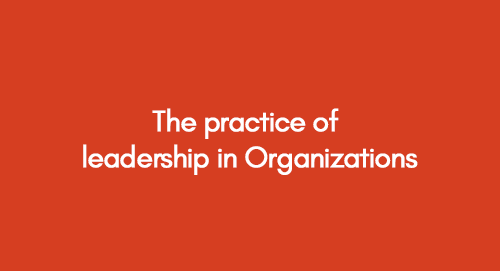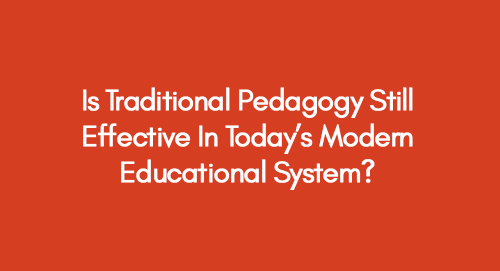
International Business
December 24, 2020
An Analysis of Facility Management & Maintenance in High-Rise Residential Buildings
December 24, 2020Leadership and Management
Leadership and Management are inherently two terms that have been linked together and used interchangeably, and while both have various overlapping notions, it is imperative to note that both leadership and management are distinct while complementing each other. Therefore, an attempt to analyse one without the other will lead to a biased and unsupportive approach. The difference between the two terms lies in the action based conduct whereby, leaders aim at inspiring and motivating whereas managers are involved with the task of organizing, implementing, planning and coordination (Lopez, 2014).
Initially, both a leader and manager were easily distinguishable based on their role within an economy as well as an organization; however, with the onset of an era of globalization, it is not only problematic but also discriminatory to draw a clear distinction between both since employees are no longer treated as undifferentiated cogs swirling in an industrial machine. Employers now not only look at managers in order to assign work to them but also to define a specific purpose while inspiring and motivating them to work towards progression. Similarly, managers are not only involved in organization of the activities but need to nurture an environment where talents and results can be inspired. However, this similarity and overlapping of duties has resulted in some confusion whereby people now generally use both management and leadership as synonymous terms (Sahin, 2012).
From the literature reviewed, the key to resolving most organizational hierarchal issues lies in successfully distinguishing between the two while realising that both are complementary and therefore cannot be inherently separated. Where management involves organizational functioning, leadership focuses on aligning the employees to the organizations vision through communication, inspiration and most of all motivation. However, where a leader leads, the manager ensures efficiency and practical functioning of the employees and the organization.
Throughout the module, we have come across a variety of leadership and management theories, all of which have contributed to the enhancement of my knowledge as well as allowing me to personally groom myself into working on my strengths and weaknesses to be able to fit in the role of a leader successfully. An important aspect that I realised during the course of my study within the module was that both managers and leaders are inherent to the efficient functional capability of the organization, however, it is also true that everyone today and even before wants to be a leader rather than a manager. This is probably owed to the basic human need of wanting to achieve all that is available without the patience of going through the basic steps to becoming a leader. In my opinion, a good leader although has certain characteristics that individuals are born with, however it requires them to undergo a step by step process of being a good team worker, a manager and then a good leader. This is illustrated through various models and theories that we studied in the course of this module.
On a personal level, I connect most with the action based leadership theory formulated in 1973 by John Adair, which aims at reconciliation of the desires and goals of an individual while aiming to address and implement the specific team objectives and goals (Keller, 2001). The theory inherently comprises of three components, balancing of the team, the individual focus and the project task, whereby all three must be proportionally balanced to lead to a successful leadership. A good leader in this case aims at focusing on the strengths of the individuals and allowing them to manifest their weaknesses into the overall wellbeing of the project. Another theory that has taught me a lot is the French and Raven’s five forms of power because it draws a distinction between the use of leadership and power (Algahtani, 2014). It is stated that wherever an individual assumes a position of a leader, or is given the said position then it is most likely that in that place, that particular individual will have the most power to make rules and take decisions.
There are five different types of powers mentioned within the theory which can be present at any given time within an individual. A leader possessing the reward power is essentially in the power to award financial bonuses or raises to employees based on their performance. Expert power is present in an individual when they are given this position of a leader based on their knowledge and expertise. Legitimate power is present when an individual assumes the role of a leader pursuant to a specific title or a designation within an organization. Coercive power is inherently the opposite of reward power and therefore is present when an individual has the authority to demote or fire people based on their performances (Mumford et al, 1991). Referent power lastly is present when an individual does not have the authority to do any of the aforementioned job descriptions however; they have assumed the position of a leader based on an intangible component, such as charm, popularity or fame. This theory is important because it helped in highlighting the types of leaders that may be present in an organization and allows the individual on a personal level to choose which leader they’d want to work with in order to promote their career growth.
A leadership model developed by Tannebaum Schmidt, referred to as the Tannebaum Schmidt Leadership Continuum is very helpful since it covers a variety of approaches to leadership by providing a varied spectrum and giving the individuals the leverage to fall anywhere within the varied spectrum (Livingston, 2009). It is very rare for an individual to completely possess one end of the spectrum values, therefore it is practical and reasonable to expect the individuals to fall somewhere within the spectrum based on their knowledge, experience and personality traits. The model lays down seven values that are used to describe the various styles of leadership comprising of: tells, sells, suggests, consults, joins, delegates and abdicates. Most of the styles mentioned here are self-explanatory, however, the ‘’tells’’ style leader will provide direct instructions to the employees or team members for the progression towards a project goal (Morgeson et al, 2010).
The ‘’sells’’ style leader will ensue a discussion between the leader and the employees which allows the latter to have their opinions and suggestions heard and subsequently implemented to a certain extent. The ‘’suggests’’ style leader will involve the group into a discussion whereby they give their suggestions and makes them feel like they are integral to the proceeding of the project (Humphrey et al, 2007). The ‘’consults’’ style leader will put trust in the team by allowing them to evolve their decision making and thinking processes, but this is only workable where the team itself has enough experience to tackle a particular problem or circumstance (shahrill, 2011). The ‘’joins’’ style leader will fall in with the team and work as one of them rather than being a dictator and giving instructions to the employees, however this will be useful where the culture of the organizations allows the authoritative management and the staff to be able to sit and work together. The ‘’delegates’’ style leader will delegate the work to a group of team members and will put trust in their capability to fulfil the task based on a predetermined brief (Goleman, et al, 2002).
The ‘’abdicates’’ style leader will completely step back from the task and allows the team to complete the entire task from the beginning till the end. Even though the model encompasses all the aspects that may be present in other theories it is useful because it has helped in lumping together all the basic forms of leadership and where an individual follows this model, they can successfully choose their particular style of leadership based on the situation or circumstance at hand.
On the other hand, with regard to management theories and models, I find only the classical management theory and the human relations approach to be applicable to me personally as well as practically. The classical management theory developed by Urwick and Fayol is based on the researcher’s own experiences within the management of an organization and thereby, they break management down into five distinct elements. First and foremost, for optimum management of an organization it is imperative for managers to be involved not only in forecasting but also planning by analysing the possible outcomes in the future and subsequently implementing action plans for the outcomes. The second element is organization of various material, infrastructure and human resources of the given project or task. The third element is commanding, whereby the manager should be able to maintain the amount of activities that the employed personnel are involved in. The fourth element is the coordination between effort and the subsequent activity by harmonising both of them together in proportionality (Sharma and Jain, 2013). The last element for efficient and effective management is controlling which requires that the mangers ensure all procedures and employees to conform to certain sets of rules and regulations.
Both Fayol and Urwick have devised a set of principles that have been based on their own work and professional experience which provide a normative view of optimum management capability. They present various other notions within their theory such as the concept of centralisation which entails that centralization is inherent and therefore must be present as being part of the natural order within any organization. Furthermore, they state that an established hierarchy is imperative for the successful running of the organization which should result in equal treatment of all the employees. They further require the management to allow the employees to initiate and innovate while maintaining a sense of morality, harmony and cohesion amongst them. The remuneration based in an organization should be performance based as it is one of the only tangible forms of performance appreciators present. Another very important aspect of the theory is to have one commanding officer, there should be no contravening officers managing the team since this would lead to confusion and thereby make the team less motivated to work.
The second theory on management encompasses the human resources approach developed by Mary Follet and later refined by Rensis Likert focuses on the relationship between the manager and employees in a holistic manner (Zaleznik, 2005). The distinction is drawn between four different types of management systems, whereby the first one is the exploitative authority which allows the management to instil fear and there is no communication between the employees and the higher management. The second type is the benevolent authority which allows the management to use rewards for motivation, and the communication between the subordinates and the management authority is based only on what the management wants to hear and instruct. This style of leadership further involves all decision making process to take place at the higher level but may be delegated under a strict prescribed framework. The third type is the consultation type where the management involves into a limited form of consultation with the employees and uses both rewards and punishments as performance evaluators (Lunenberg, 2007). Broader policy frameworks are set by the top management, whereby specific focus driven policy initiatives are delegated at the lower level. Furthermore, the communication between the employees and management is present however, feedback or suggestions of the employees to the highest management is limited and cautious. The last style of leadership is the participative management which uses group participation, high reward system based on performances and improves the management of work.
Furthermore, the relationship between the employees and the higher management is close; whereby both can communicate their ideas, suggest changes and discuss feedback with each other. The process of decision making is entrenched within the organization and is done through consultation and group participation ensuring that ideas and suggestions put forth by all employees and stakeholders is given equal consideration. This style of management ensures not only high level of involvement by the employees and all groups present within an organization but further ensures that by giving proper attention and value to work of the employees there is higher level of productivity then in any other form of management.
Both styles of management appeal well to the organization. While the classical management theory lays down specific factors that should be apparent within an efficient management system, the second style of management employing the human resources approach works best if there is effective communication across the organization (Kotter, 2001). In my opinion, the aforementioned theories and models on both leadership and management illustrate various points. First and foremost, it is important for individuals to learn to be good managers and effective leaders. An individual that does not possess the basic characteristics of a good leader will not be able to lead the team even if they are provided with an opportunity to do so and similarly a team or an organization cannot be managed unless it employees the basic characteristics of the human resource based approach.
In an era of globalization it is imperative to have an employee centred approach to successfully run a project or an organization. Applying this to my own personal scenario, like I had mentioned earlier, I believe that good leaders are born, however every leader must go through the process of working as a part of a team, managing a team and then finally leading a team. Going through this step by step process allows the individual to grow personally as well as professionally while understanding the basic human need and their relevance within the successful functioning of an organization.
References:
- Algahtani, A. (2014). Are Leadership and Management Different? A Review. Journal of Management Policies and Practices. Sept 2014, Volume 2, No. 3, pp 71 to 82. Published by American Research Institute for Policy Development. Available at: http://jmppnet.com/journals/jmpp/Vol_2_No_3_September_2014/4.pdf .
- Goleman, D., Boyatzis, R., & McKee, A. (2002). Primal leadership: Learning to lead with emotional intelligence. Boston, MA: Harvard Business School Press.
- Humphrey, S. E., Hollenbeck, J. R., Meyer, C. J., & Ilgen, D. R. (2007). Trait configurations in self-managed teams: A conceptual examination of the use of seeding to maximize and minimize trait variance in teams. Journal of Applied Psychology, 92: 885-892.
- Keller, R. T. (2001). Cross-functional project groups in research and new product development: Diversity, communications, job stress, and outcomes. Academy of Management Journal, 44: 547-555.
- Kotter, J. P., (2001), “What leaders really do?“, Harvard Business Review, Vol. 79 Issue 11, p.85-96.
- Livingston, J. S. (2009). Myth of the well-educated manger. Harvard business review on developing high-potential leaders (119-147). Boston, MA: Harvard Business Press.
- Lopez, R. (2014). The relationship between leadership and management: instructional approaches and its connections to organizational growth. Journal of business studies quarterly. 2014. Volume 6, No 1.
- Lunenberg, F. (2011). Leadership versus Management: a key distinction- at least in theory. International Journal of Management, Business and Administration Volume 14, Number 1, 2011.
- Lunenburg, F. C. (2011). Leadership versus Management: A Key Distinction—At Least in Theory. International Journal of Management, Business, and Administration, 14 (1), 1-4.
- Lunenburg, F. C., Thompson, B., & Pagani, D. (2010, May). The multifactor leadership questionnaire (MLQ): Factor structure of an operational measure. Paper presented at the annual meeting of the American Educational Research Association, Denver, CO.
- Morgeson, F., DeRue, S., Karam, E. (2010). Leadership in Teams: a functional approach to understanding leadership structures and processes. Journal of Management. Volume 36, No 1, pp5 to 39.
- Mumford, M. D., Zaccaro, S. J., Levin, K. Y., Korotkin, A. L., & Hein, M. B. (1991) Taxonomic efforts in the description of leader behavior: A synthesis and functional interpretation. Leadership Quarterly, 2: 245-287.
- Sahin, F. (2012). The mediating effect of leader-member exchange on the relationship between Theory X and Y management styles and affective commitment: A multilevel analysis. Journal of Management & Organization, 18(2), 159-174.
- Shahrill, M. (2014). Exploring educational administration: The relationship between leadership and management. International Journal of Academic Research in Business and Social Sciences, 4(1), 525-538.
- Sharma, M., Jain, S. (2013). Leadership Management: principles, models and theories. Global Journal of Management and Business Studies. Volume 3, Number 3, pp 309 to 318.
- Zaleznik, A. (2005). Managers and leaders: Are they different? Harvard business review on the mind of the leader (73-96). Boston, MA: Harvard Business School Press.
Get 3+ Free Dissertation Topics within 24 hours?


























